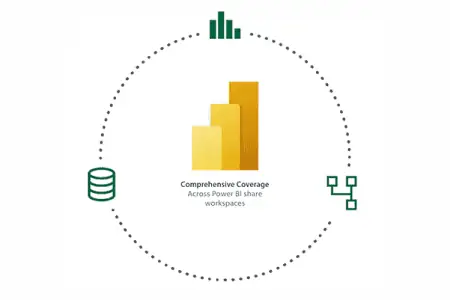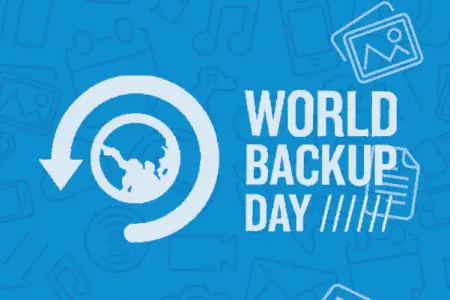
Protecting the Patchwork of SaaS
Marc Andreessen, co-founder and general partner of venture capital firm Andreessen Horowitz said that software is eating the world in 2011. Now, 10 years later, we can safely say that while software may be eating the world, services are eating software.
SaaS and its Advantages
Software-as-a-Service (or SaaS for short) is the predominant way of delivering commodity, off-the-shelf applications. In a SaaS-model, the software vendor (called an ISV), not only makes the software, but also runs it for you.
This saves customers from operational work and other toil and reduces their IT team’s cognitive load. In other words: you don’t have to spend any cycles thinking about operating and managing the software; instead, you can just use it.
This model has many advantages, ranging from low upfront (and often total) cost, easy onboarding, quick time-to-value and being able to outsource daily operations and lifecycle management so your IT team can work on more valuable projects.
On the Downside: The Patchwork of SaaS
Downsides include loss of flexibility due to economies of scale, but any good SaaS-vendor will work hard to offer just the right amount of flexibility without creating snowflake scenarios. However, these downsides are well-known, and easy to circumvent with good research and decision-making.
There’s another downside that’s harder to cope with: the fragmentation of data across the landscape of SaaS. Each SaaS vendor runs their application in an isolated island, a veritable black box. Your data is stored inside their cloud tenant (or datacenter), not yours. So how do you protect your application data?
Not only are there many islands of your data on infrastructure you do not own or control, there’s also very little standardization in general (they all use different cloud vendors, technology stacks and have different operational limitations and service boundaries), but especially in terms of data protection. Getting data out is a bespoke process that may involve proprietary protocols and requires a snowflake approach for each SaaS vendor: the amount of data protection integrations you’d need to support starts to negate the advantages of using SaaS in the first place.
Challenge: Protecting the Patchwork of SaaS
And remember: it’s your data. The SaaS vendor does not own your data or have any responsibility for protecting it; you are merely storing your data with them to be able to use their SaaS application. You are still responsible for protecting your own data, even if it’s hard to reach.
Don’t think SaaS or the Service-Level Agreement (SLA) saves you from outages, accidental deletions, data corruption or ransomware, either. Business continuity is still at risk, regardless of who runs the application. According to Gartner, by 2022, 70% of organizations will have suffered a business disruption due to unrecoverable data loss in a SaaS application. (Assuming SaaS Applications Don’t Require Backup is Dangerous).
There you have it: the problem of protecting the patchwork of SaaS.
How to Protect Your SaaS Data
The solution, on paper, is simple: store an isolated, tamper-proof copy of your application data in a datacenter or cloud tenant you control, so you are protected against any issue the SaaS vendor may have, from accidental deletions to ransomware. Coupled with granular recovery, this allows you to restore data to the same or another SaaS vendor without issue and build up a retention of backup to satisfy regulatory compliance.
Creating those copies is not easy, though. Your best bet is to use backup software, like our newly announced Zerto Backup for SaaS.
That way, you don’t have to worry about integrations and getting data out.
Choosing the right backup solution that covers your specific mix of SaaS is crucial to regain visibility into data stored across the patchwork of vendors. That way, you create a single-pane-of-glass and have one backup service for your entire landscape of SaaS, reducing the operational burden of data protection, and maximizing the potential of SaaS within your organization. Zerto Backup for SaaS supports Microsoft 365, Microsoft Dynamics 365, Salesforce, and Google Workspace.
Lastly, running your own backup infrastructure used to be capital intensive. But like any insurance policy, you’d rather pay a monthly fee and share the risk. That’s why a hosted service for data protection makes sense and has many of the benefits SaaS has: low upfront (and total) cost, easy onboarding, quick time-to-value and being able to outsource daily operations and lifecycle management so your IT team can work on more valuable projects.
Zerto Backup for SaaS to Protect Your SaaS Data
Zerto Backup for SaaS has been engineered for simplicity, powerful scalability, and security by design. The solution supports rapid adoption of cloud deployments by taking data protection best practices to the cloud, making top-tier IT security simple. Zerto Backup for SaaS architecture runs on a secure private infrastructure offering data immutability, compliance, and guaranteeing data availability.
Get started and check out Zerto Backup for SaaS, or get in touch to learn more or request a demo.
 Caroline Seymour
Caroline Seymour 

